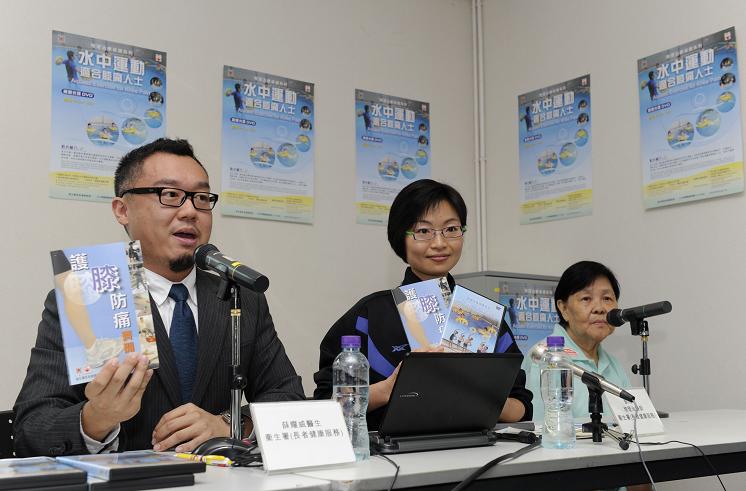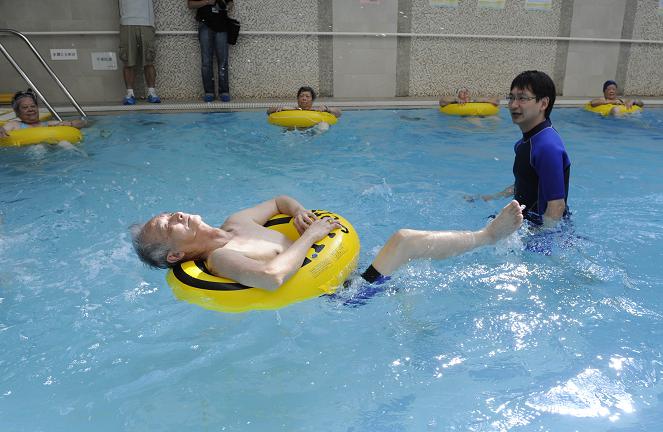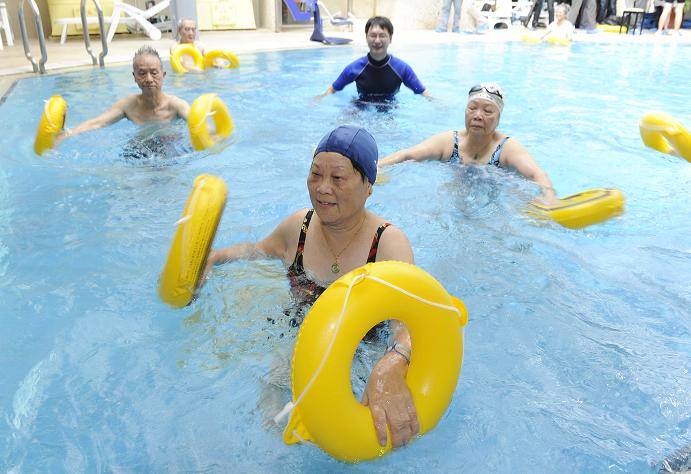Press Release
Aquatic exercises recommended as rehabilitative therapy for degenerative knee disease
8 July 2010
The Department of Health (DH) has recommended that the general public make good use of swimming pools in the community to practise aquatic exercises, which are particularly helpful for those suffering from degenerative knee disease.
Dr Alfred Sit of Elderly Health Service, DH said that excessive or improper use of the joint may damage the joint cartilage leading to degenerative joint disease. The associated pain deters sufferers from moving the affected joint which in turn reduces the secretion of synovial joint fluid, increases friction within the joint and decreases nutrient supply to cartilage, hindering recovery.
Dr Sit said exercise enhances joint mobility and increases secretion of synovial fluid which helps to speed up recovery. The strengthened muscles also offer additional protection to the joint.
In 2005, the Elderly Health Service of the Department of Health (DH) designed a set of aquatic exercises and conducted a study on its effects on degenerative knee disease.
After 10 weeks, a host of benefits were seen among the elder subjects:
* Lessening of knee pain, leading to reduced use of analgesics;
* Reduction in lower limb swelling;
* Increase in range of movement and reduced knee stiffness;
* Strengthening of lower limbs muscles;
* Improvement in mobility and agility;
* Improvement in body balance.
Dr Sit said a number of unique properties of water have made aquatic exercises a widely-used form of rehabilitative therapy for degenerative knee disease:
* The buoyancy of water reduces body weight in water. For people who are overweight or suffer from low back pain, knee pain or ankle pain, exercising in water reduces the risk of injury while achieving the beneficial effect of accelerating recovery. The buoyancy also provides support and protection for patients and enables them to move their lower limb joints with less effort, thus increasing the mobility of the joints.
* The resistance of water helps to enhance muscle strength and endurance. With the use of life buoys, aquatic exercise enables the patients to achieve a level of exercise intensity comparable to weight training on land. There is an additional benefit of reducing the risk of injury resulting from sudden forceful contractions of the muscle.
* The pressure of the water promotes blood circulation, metabolism, and provides a massaging effect which helps to reduce joint swelling. There is also training effect on chest muscles responsible for breathing, hence enhancing cardiopulmonary function.
Dr Sit said when practising aquatic exercises in outdoor swimming pools, the public should take proper precaution against sunburn, e.g., by wearing long sleeve swimming suit and applying sunscreen of SPF 15-25. For optimal protection, sunscreen should be applied at least 30 minutes before exposure to sunlight and re-applied every two hours. They should avoid midday sun.
To help the public to know more about aquatic exercises and their benefits on degenerative knee disease, DH will launch a DVD entitled "Aquatic Exercise for Knee Pain" in late July 2010. Those with need can make use of the DVD to guide self-practice of these aquatic exercises. It contains detailed explanation and demonstration by physiotherapists.
The DVD also comes with a bilingual water-proof "Warm up and Aquatic Exercises” reminder sheet. The DVD offers Cantonese and Putonghua voiceover and subtitles in Traditional Chinese, Simplified Chinese or English. Entitled "Aquatic Exercise for Knee Pain”, it is priced at HK$ 20 and will be available for sale at Elderly Health Centres or Central Health Education Units of DH in late July. For enquiries, please browse www.elderly.gov.hk or call 2121 8621.


